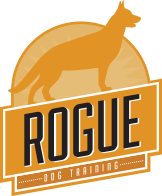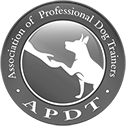Loose Leash Walking: A Guide for Beginners
Loose Leash Walking vs Heel
Loose leash walking is an extremely important skill for all dogs to learn but it is often confused with the heel command. Both are included in basic dog obedience classes, but people still tend to blend them together. Loose leash walking is getting your dog to walk on a leash without any tension in it. The distance the dog is from you does not matter in loose leash walking. All that matters is whether it is pulling on the leash. A heel command demands the dog walks extremely close to you while focusing on you 100%. After a heel command, the dog should not acknowledge anything but you, even in the most distracting situations.
How to Train your Dog to Walk with a Loose Leash
1) While holding the end of the leash, encourage the dog to your left or right side.
2) When the dog reaches your side, present your hand for a touch. When the dog touches your hand with his/her nose, say, "Good" and give the dog a treat.
3) Stand still and hold the end of the leash. Let the dog wander off as long as there is no tension on the leash and remains on one side of you.
4) Every time he/she begins to pull or migrate to the other side, give the no reward marker and lure back into a heel/focus position.
5) Once he/she is in the heel position and focused for 1-2 seconds, release him/her. If your dog attempts to move from the heel position before being released, give the no reward marker and lure back into the heel position.
6) While in the heel position, every time the dog looks at you while standing still, say, "Good" and reward the good behavior. Repeat starting at #3.
Your dog will learn that putting any tension on the leash forfeits a ton of freedom and will begin to walk with a loose leash naturally.
Adding the "Let's Go" Cue to Loose Leash Training
1) Hold the end of the leash and encourage your dog to come to your side.
2) Present your hand for the dog to touch. While keeping his/her nose on your hand, say the dog’s name followed by, "Let's go."
3) Take 2-3 steps away from the dog with no tension in the leash and then say, "Good," followed by a treat, the release cue "OK" and praise.
4) Continue practicing by increasing the steps you take following the formula above.
Once your dog is perfoming well, begin to increase performance by weaning him/her from the food reward or starting with the dog at your side. You can also make your dog come to you to get the treat after you say, "Good." When removing the treat, do so by gradually increasing the number of steps you take from the dog before treating. Do not stop praising him/her, though. If your puppy starts to pull, give the no reward marker and back away from the source of the pulling until he/she looks at you for direction. While your dog is looking at you, say, "Good," and give a treat. Then say, "Let's go" and continue walking.
Introducing Distractions to your Loose Leash Walking Exercises
Getting your dog to loose leash walk with distractions is the next step. Be sure to introduce one variable at a time to your exercises. For example, take fewer steps when distractions are present. Be sure to work under your dog's behavioral threshold. Remember to reward him/her at about every 10 steps with "Good" and a treat. Depending on the dog and the distraction, you may need to take fewer steps. You can slowly reduce the distance by practicing this exercise until you understand your dog's capabilities. Keep practicing and don't give up. Your dog can become a great loose leash walker if you stick with the training program and learn to understand your dog.



